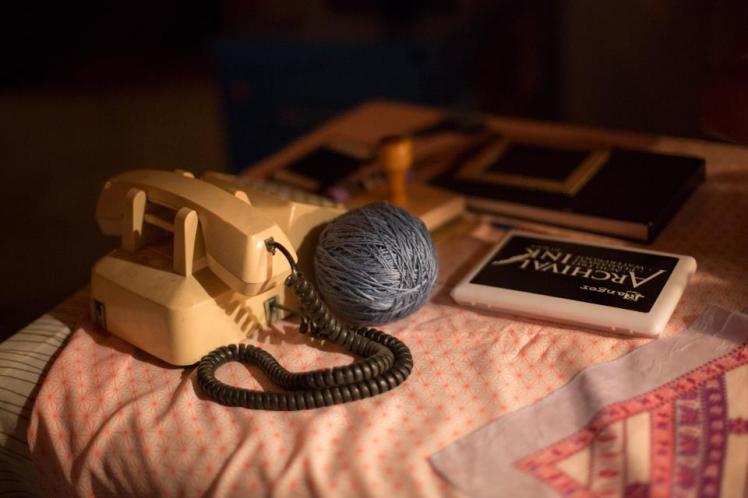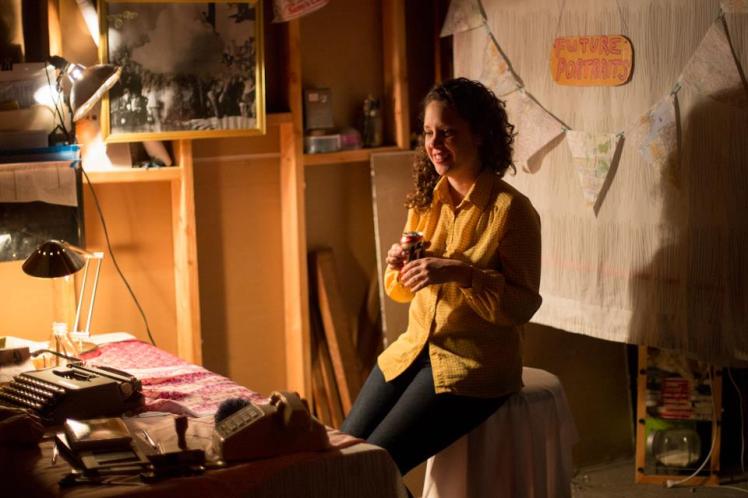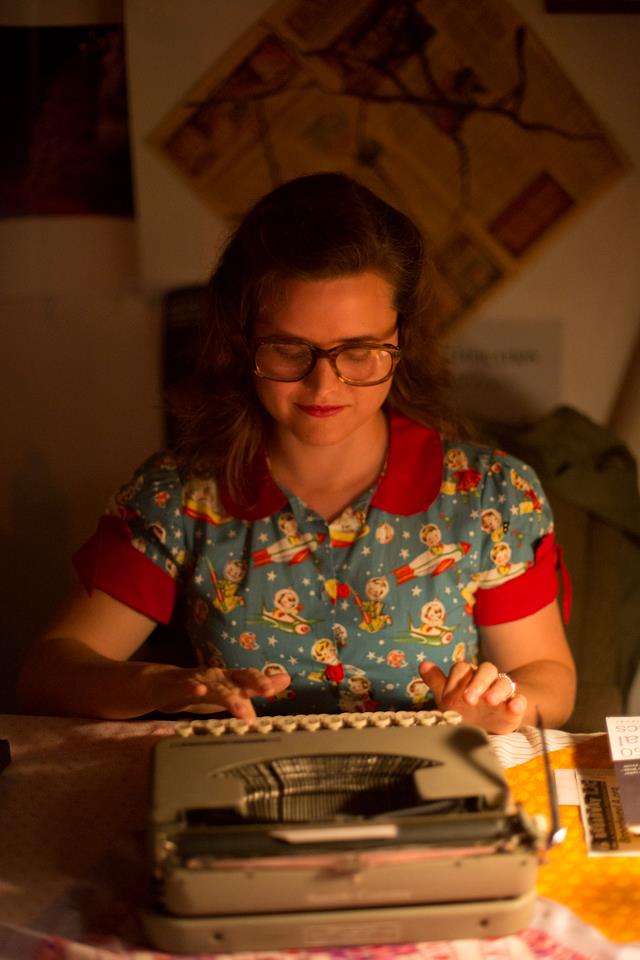
So, last weekend, I set up my future portrait studio at Concord for ENTER>text.
Why a future portrait, you might ask?
What was the experience of taking future portraits like, you might ask?
Here is a quick recap of the night—
Many other incredible artists assembled pieces throughout the ENTER>text event space– all of which were performed simultaneously. Participants could grab snacks, drinks, and wander in and out of the work at leisure. Other performances included: readings in a tent, interactive digital readings in a car, lectures on Twilight, and a reality tv shoot. There were so many wonderful opportunities to engage– I only wish I could have seen more of the other pieces, but time did not allow. I was busy making future portraits! My little photo studio was situated in a cozy corner of the art space and consisted of a backdrop, stool, “future portrait” signage, lighting, and desk.
I used the following materials to create each portrait: typewriter, personalized stamp, blue twine, archival ink, newsprint, 4″ x 4″ paper with matching envelopes, pen, pencil, glue stick, scissors, square stencil, ruler, thesaurus. The rotary phone is present for mere aesthetics.

Once the event began, I sat at my desk and waited. When a possible participant approached, I welcomed them into my space, ushering them to sit on the stool in front of the backdrop for me. I told them they could leave at anytime and that this might be a while.

If they agreed, then we started a session.
I placed a small square of paper into the typewriter and waited for inspiration.
Sometimes the subjects spoke to me and sometimes they did not. I always tried to meet them where they were at– to give them what they needed to feel safe and secure–so, if they spoke, then I spoke back. If they were quiet, then I was too.
The typewriter was always lingering between us– governing us. At times, I felt guilty about the typewriter– how it confused the relationship– then, I realized it was the reason for the relationship, so I lived with it. I took ownership of it– responsibility for it. I became the host of it.
The longer I waited for inspiration, the harder I stared at the subjects. The harder I stared at the subjects, the more open my subjects became– this was a pleasant side effect of daydream meets focus.
Some thoughts during each session: Who did they want to be for me? Who were they to me? Could I please them? Is this about pleasing them or seeing them? Seeing the dream continued? How do I host the dream?

With my fingers perched above the keys, I realized daydreams are informal contracts. Ephemeral projections. Emotional dances. Daydreams are also playful, or once we pass by judgement, there is a loving place for us no matter how different we think we are from one another. No matter if the initial meeting feels dark or troubled.
Everyone who sat for me was memorable– lovely– and I was humbled.
After I had typed the subject’s future on the small square, I pasted it on a larger square of paper. I outlined a square around the paper, to give the appearance of a matted frame, then I sealed it in an enveloped, and wrapped twine around it like a gift. I presented the portrait to the subject, hugged the subject, and thanked the subject.
No actual cameras were used to take future portraits, although subjects could photograph me if they desired to do so. It was only fair. Photographer Jason Gutierrez sat for me and took photos before and during our session. These photos posted here are his documents of the experience.

So, after three hours of taking future portraits, here are my findings:
- Portraiture is not about manipulation– it’s about letting go.
- When we let go, our faces tend to crack in the most beautiful way.
- A subject’s face will not crack unless your face cracks. So, the letting go must be mutual in order for this to occur.
- A dual cracking is so simultaneously intimate– you will both feel it in your heart. It’s heavy and soft. You will want to sleep in it.
- As a designer of possible futures, it is your responsibility to not just witness the crack, but to catch the crack, to nurture it, to love it.
- The crack is the core. Never exploit it. You are not great because you found it.
- I have experienced this feeling on only two other occasions– both of which involved caring for a terminally ill person.
- Portraiture is not just about confrontation, as I had thought previously– it’s not aggressive– it’s more about being a caregiver of imagery, ideas, and embracing a dualistic sense of self– what is reflected / where we meet– being awake and attentive to collaboration and being a sensitive steward of emotion.
- The future is bright.
2 thoughts on “What Is Reflected / Where We Meet”